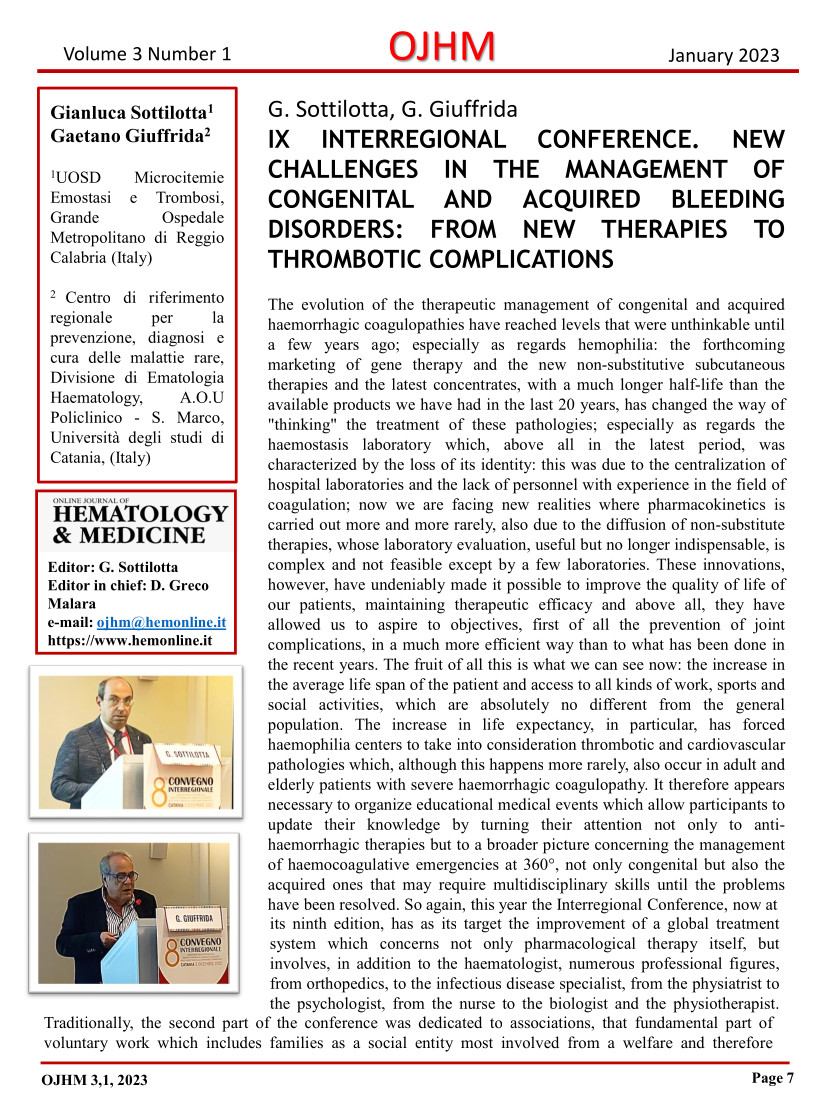G. Sottilotta, G. Giuffrida
Abstract
The evolution of the therapeutic management of congenital and acquired haemorrhagic coagulopathies have reached levels that were unthinkable until a few years ago especially as regards hemophilia the forthcoming marketing of gene therapy and the new non substitutive subcutaneous therapies and the latest concentrates, with a much longer half-life than the available products we have had in the last 20 years, has changed the way of "the treatment of these pathologies especially as regards the haemostasis laboratory which, above all in the latest period, was characterized by the loss of its identity this was due to the centralization of hospital laboratories and the lack of personnel with experience in the field of coagulation now we are facing new realities where pharmacokinetics is carried out more and more rarely, also due to the diffusion of non substitute therapies, whose laboratory evaluation, useful but no longer indispensable, is complex and not feasible except by a few laboratories.
These innovations, however, have undeniably made it possible to improve the quality of life of our patients, maintaining therapeutic efficacy and above all, they have allowed us to aspire to objectives, first of all the prevention of joint complications, in a much more efficient way than to what has been done in the recent years The fruit of all this is what we can see now the increase in the average life span of the patient and access to all kinds of work, sports and social activities, which are absolutely no different from the general population.


